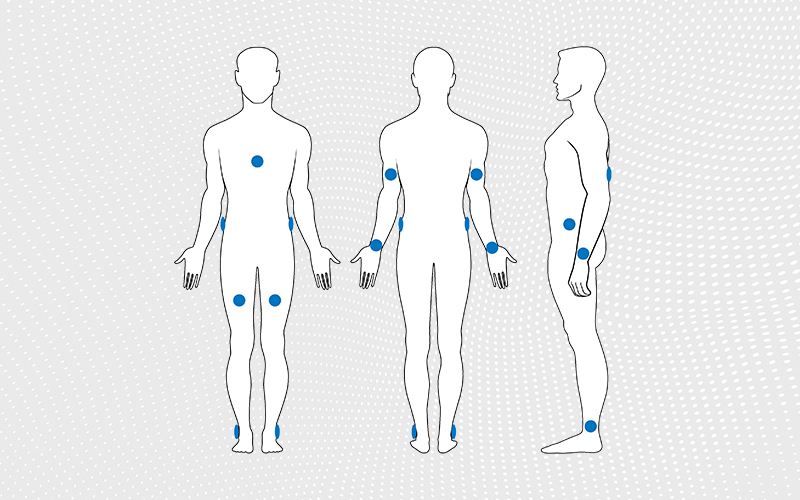News &
Insights
17 August 2022
What is the Optimal Wear Location for Actigraphy?
What is the optimal wear location for actigraphy? By Stephanie Sargeant, Commercial Manager It’s well […]
Share This Post, Choose Your Platform!

What is the optimal wear location for actigraphy?
By Stephanie Sargeant, Commercial Manager
It’s well known that actigraphy has distinct benefits at the wrist from a compliancy perspective and often makes the most sense for achieving maximum data collection, particularly when combined with technology that is fully waterproof with a long battery life. However, it doesn’t always have to be worn only at the wrist. Like so many components in study design, it always goes back to a few core research questions to help decipher the most appropriate wear location:
- What is the participant population?
- What is the study trying to achieve?
- What are the main measures and metrics of interest?
- How are you planning to analyse the data?
Study co-ordinators must think early about whether the participant will tolerate the device in a particular location, along with what the most relevant wear site is for the main metrics of interest. Often groups such as dementia cohorts and children with ADHD are tested from an acceptance and tolerance perspective, and still achieve high compliancy at the wrist. Other times, specific research questions, such as understanding PLMD in sleep may require a sensor on the ankle for more accurate objective measurement; or gait in Parkinson’s may require a hip and wrist-worn device to advance the research field.
We also need to consider cultural behaviours. In some countries, people can be extremely expressive and essentially ‘talk with their hands’ meaning wrist may not be appropriate. Furthermore, in some low-income countries, it has been noted that people seen to be wearing a device on their wrist could make them a target for theft.
Other factors that need to be considered for the wear location include:
Patient burden
Will the wear location affect adherence? What is the intended duration of the wear period? How can we make the sensor as low subject burden as possible within the research trial?
The need for maximum 24/7 continuous data collection
Are you looking for long-term, continuous remote monitoring? It can often be a trade-off between maximum data collection and comfort at the wrist vs sensor measurements of a device on the hip.
What does the existing scientific literature say?
There are hundreds of validation studies comparing different wear locations across different age groups and conditions. They not only review wrist vs hip, but also the dominant vs non-dominant wrist question too. For some programmes, it’s appropriate for participants to be wearing two devices at the same time, for example the lower lumbar and wrist in a low mobility group.
Raw data vs wearables with on-board algorithms
This relates to ‘how are you planning to analyse the data?’ Are you able to collect unfiltered, raw data and apply the most relevant algorithm, or is there an opportunity to further develop algorithms and the science in an area with advanced analysis techniques? Do you know what algorithm is being applied to the data?
As a digital health company, Activinsights specialise in the understanding and accurate measurement of objective everyday living behaviours, such as physical activity and sleep. Our technologies can be worn on multiple body locations, from the wrist and ankle to the hip and thigh and anywhere in between (as any strap can be applied to the technology).
We particularly lead the way in developing machine learning techniques for wrist-worn algorithms to enhance the objective measurement of human behaviour with low subject burden. This includes posture, gait and sedentary behaviour at the wrist, with clear sit/stand/lying transitions comparable at the wrist to the thigh. It also enables the identification of novel objective insights, such as measurements for scratch, tremor, fidgeting or stimming behaviours at the wrist.
So, when it comes to deciding the most appropriate wear location, start with considering the participant population first and foremost, then consider the analytics and if you have any questions or need advice along the way, we’re always happy to help.


